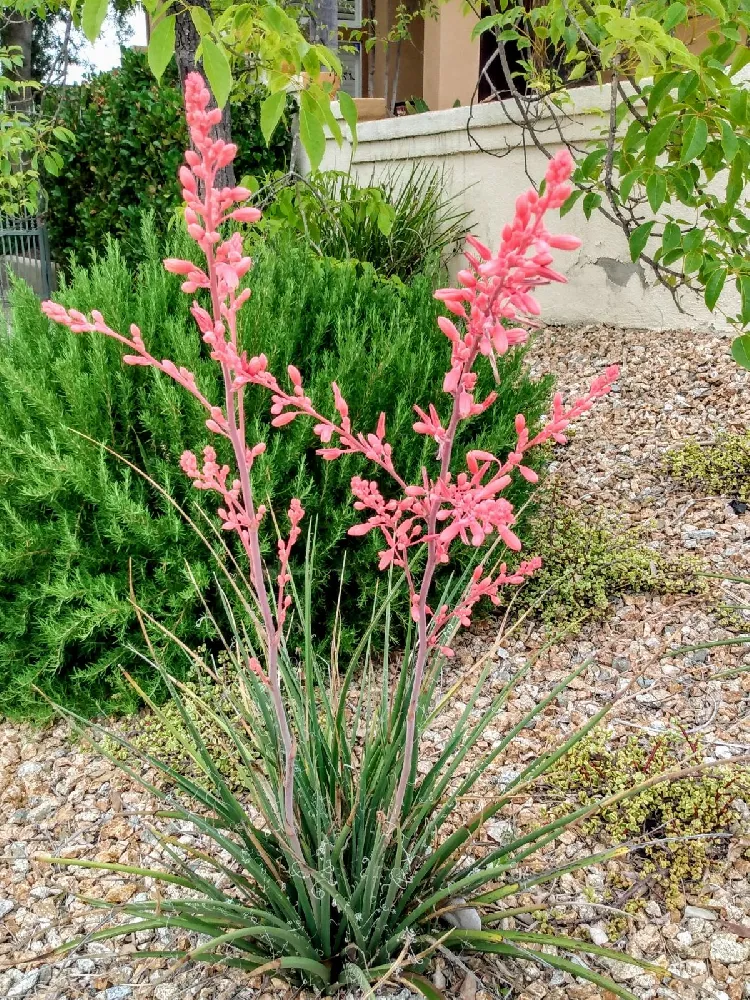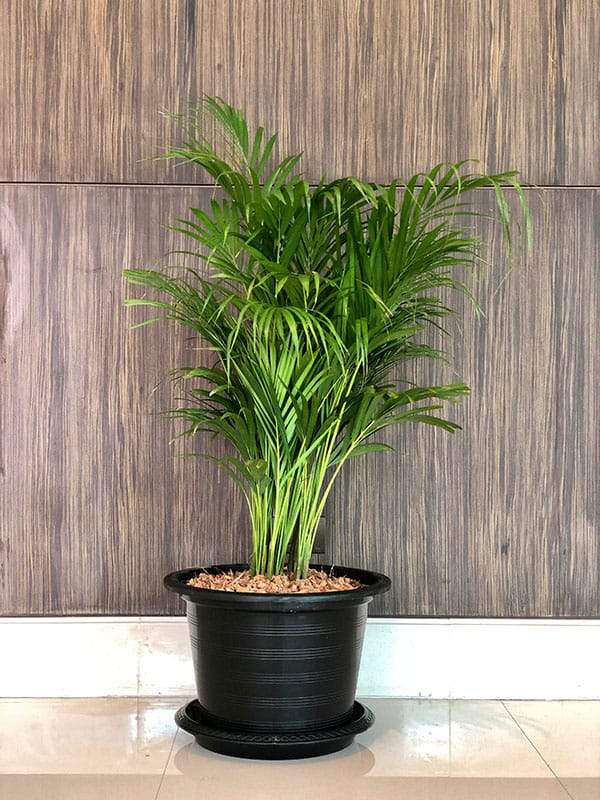- Home >
- Yucca Plants
Yucca Plants for Sale - Buying & Growing Guide
1 Results
Planting and Care
Planting instructions
Yucca is grown both indoors and out. Some varieties thrive down to USDA hardiness zone 3, but most like warmer weather. If you are planting your Yucca outside, site it where it will get full sun to part shade, check the tag on your plant to see what the light recommendations are for your variety. Yucca can handle just about any type of soil but it does not like wet feet, so plant in an area that drains well.
Dig a hole for your plant that is as deep and twice as wide as the root ball and place the plant in the hole so it is at the same level as it was in the nursery pot. Fill in around the root ball with soil, tamping it down frequently to avoid air pockets. Water thoroughly when done and add an organic mulch, such as bark chips, around the root zone. If planting indoors, make sure the container you choose has enough room for the roots to grow and follow the same directions.
Watering and nutrients
Water your Yucca with about one inch of water a week until it is established and putting forth new growth. After that, it will only need supplemental watering in the worst drought conditions.
Your outdoor Yucca does not need much in the way of nutrients but if you want to encourage growth you can feed it a half-strength solution of balanced fertilizer once a month during the growing season. Your indoor Yucca is more in need of regular fertilizing during summer, using a slow-release product designed for houseplants.
Pollination
Most Yuccas are monoecious, meaning that male and female flower parts are found on a single plant. They are pollinated by insects such as the Yucca moth and develop seed pods with small, black seeds late in the season. If you do not want seedlings cropping up around your Yucca, it is best to prune the flower stalk after the flowers have wilted.
Pruning
To prune a Yucca, you will need to wear long, thick, gloves as the leaves can be very sharp. In spring, cut back the dead leaves from around the base of the plant. This is natural and has no cause for concern. They will not hurt the plant but are unsightly. You can cut out the central stalk higher up after the plant flowers, this may take a saw as it can be thick. If you have a variety such as Yucca aloifolia that grows quite tall, it can be cut back to control growth in early spring and will resprout from the cut point.
Pests, diseases, and animals
Yucca plants grown inside may experience typical houseplant pests such as aphids, mealybugs, and spider mites. These can be dealt with by wiping down the leaves with a cotton swab dipped in rubbing alcohol. Outdoor pests include agave plant bugs and the Yucca weevil. Keep your Yuccas healthy to avoid leaving them susceptible to infestation.
Your Yucca may experience bacterial or fungal diseases such as Cercospora and Coniothyrium, both of which cause black spots on the leaves. Treat diseases such as these with leaf washing when possible, good soil maintenance, and spraying of a fungicide when necessary.
Achieving maximum results
The Yucca family has many varieties and often two varieties will have completely different care requirements, so it pays to educate yourself when you purchase a young Yucca plant. One thing common to all varieties is that they do not like soggy soil, especially if they are grown at the northern end of their range.
Another factor to consider is that Yuccas are large plants that can grow as tall as 30 feet and 25 feet wide. When choosing a location for your Yucca, be aware of its size when fully grown. It is also good to site Yuccas far from driveways and sidewalks, as the sword-like leaves have sharp edges that can hurt bare legs and arms.
FAQs
Should I plant Yucca cuttings in the ground?
Taking a cutting is a great way to increase your Yucca population. After cutting, allow the branch to dry in a cool place for a few days, then place it in potting soil. Give it indirect light and it should start developing roots in a month. You can also obtain new plants from the offsets that grow on your main plant during the summer. Separate these and plant them in good soil and they should grow on their own.
Are Yucca plants and yuca the same thing?
No, they are not the same but they are often confused with one another. Yuca, with one “c,” is a common name in some parts of the world for Cassava, a woody shrub with an edible root that is a member of the spurge family. It is not related to the Yucca family.
Can I grow Yucca from seeds?
Yes, you can grow a Yucca from seed. Purchase seeds at a nursery or online garden store, or allow a yucca flower to develop fully into a seedpod and then harvest the seeds when they are hard and dry in the fall. Plant seeds in a potting mix designed for cactus and succulents and water. Growth should appear in a month or so.
How do I care for my Yucca inside?
Indoor Yuccas should be treated the same way as one planted outside, give it partial sun, water infrequently and empty the overflow tray so it is not sitting in water, and feed it periodically throughout the growing season. Yucca is an easy plant to grow indoors and can make a definite statement in any room where it is placed.


